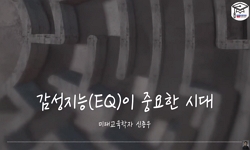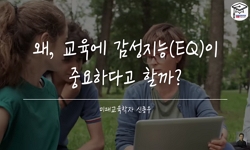The purpose of this study is to investigate the impact of Korean dance on emotional intelligence and social development by educating upper grade elementary students in insular areas who are experiencing dance classes for the first time. The research q...
http://chineseinput.net/에서 pinyin(병음)방식으로 중국어를 변환할 수 있습니다.
변환된 중국어를 복사하여 사용하시면 됩니다.
- 中文 을 입력하시려면 zhongwen을 입력하시고 space를누르시면됩니다.
- 北京 을 입력하시려면 beijing을 입력하시고 space를 누르시면 됩니다.

한국무용이 도서(섬) 지역 초등학교 고학년의 감성지능과 사회성에 미치는 영향 = The Effect of Korean Dance on the Emotional Intelligence and Sociablity of Upper Grade Elementary Students in Insular Areas
한글로보기https://www.riss.kr/link?id=A107905828
- 저자
- 발행기관
- 학술지명
- 권호사항
-
발행연도
2021
-
작성언어
-
-
주제어
korean dance ; 한국무용 ; elementary school ; 초등학교 ; upper grade ; 고학년 ; emotional intelligence ; 감성지능 ; sociality ; 사회성 ; insular regions ; 도서지역
-
KDC
900
-
등재정보
KCI등재
-
자료형태
학술저널
-
수록면
45-61(17쪽)
-
KCI 피인용횟수
0
- DOI식별코드
- 제공처
-
0
상세조회 -
0
다운로드
부가정보
다국어 초록 (Multilingual Abstract)
The subjects of the study were two classes of fourth grade elementary students in insular areas of Wando-gun, Jeollanam-do, and both classes were new to dance, and the experimental group took Korean dance classes under the name of ‘ Encountering the Dance’ once a week for 40 minutes while the comparative group took dance classes once a were for 40 minutes under the theme ‘ Playing with the Dance’ . The class was conducted by the same dance instructor, and the questionnaire was first given out before the dance class began, and handed out to students again eight weeks after the dance class was over.
As a result of the study, it was found that the sub-areas of emotional intelligence (emotional perception, emotional expression, ability to control emotions, and empathy) of the experimental group, which took Korean dance classes, all rose, showing a positive effect. In addition, in the sub-areas of the sociality index (reliability, autonomy, domination, diligence, service, stability, sociability, and compliance), there were significant differences in the sub-factors, excluding stability. In the comparative group, there was a significant difference in emotional recognition factors in the emotional intelligence index, and for the sociability index of the comparative group, there was no significant difference except for diligence.
The results of this study suggest that first, dance and art education should be universal, something anyone can experience and share. Second, systematic and planned Korean dance education programs can positively change emotions and socialization for students. In other words, a universal and systematic dance education, dance education programs utilizing the collective activities of Korean dance, and the composition and expression methods of folk dances have a very significant educational effect, so dance education should be conducted while the development of education programs for various ages continues.
The purpose of this study is to investigate the impact of Korean dance on emotional intelligence and social development by educating upper grade elementary students in insular areas who are experiencing dance classes for the first time. The research questions selected are 1. What level of differences in emotional intelligence does Korean dance make for upper grade elementary students in insular regions? and 2. What level of differences in sociability does Korean dance make for upper grade elementary students in insular regions?
The subjects of the study were two classes of fourth grade elementary students in insular areas of Wando-gun, Jeollanam-do, and both classes were new to dance, and the experimental group took Korean dance classes under the name of ‘ Encountering the Dance’ once a week for 40 minutes while the comparative group took dance classes once a were for 40 minutes under the theme ‘ Playing with the Dance’ . The class was conducted by the same dance instructor, and the questionnaire was first given out before the dance class began, and handed out to students again eight weeks after the dance class was over.
As a result of the study, it was found that the sub-areas of emotional intelligence (emotional perception, emotional expression, ability to control emotions, and empathy) of the experimental group, which took Korean dance classes, all rose, showing a positive effect. In addition, in the sub-areas of the sociality index (reliability, autonomy, domination, diligence, service, stability, sociability, and compliance), there were significant differences in the sub-factors, excluding stability. In the comparative group, there was a significant difference in emotional recognition factors in the emotional intelligence index, and for the sociability index of the comparative group, there was no significant difference except for diligence.
The results of this study suggest that first, dance and art education should be universal, something anyone can experience and share. Second, systematic and planned Korean dance education programs can positively change emotions and socialization for students. In other words, a universal and systematic dance education, dance education programs utilizing the collective activities of Korean dance, and the composition and expression methods of folk dances have a very significant educational effect, so dance education should be conducted while the development of education programs for various ages continues.
참고문헌 (Reference)
1 추혜연, "한국적 정서인지가 살풀이춤 학습효과에 미치는 영향" 한양대학교 대학원 2004
2 한명선, "한국무용/동작치료가 다문화 아동의 사회성 및 학교생활적응에 미치는 영향" 조선대학교 교육대학원 2014
3 복미경, "한국무용 학습이 아동의 감성지능에 미치는 영향" 숙명여자대학교 전통문화예술대학원 2003
4 황승옥, "한국 창작무용 프로그램이 초등학생의 신체활동 즐거움 향상에 미치는 영향" 서울교육대학교 교육대학원 2007
5 이은정, "한국 민속무용이 유아의 사회성 발달에 미치는 영향" 중앙대학교 대학원 2004
6 강혜진, "한국 민속무용 참여에 따른 초등학생의 사회성 발달" 과학교육연구소 51 (51): 403-409, 2012
7 김정하, "한국 민속무용 경험이 미국 초등학생의 신체활동 즐거움에 미치는 영향" 한국초등체육학회 24 (24): 35-48, 2019
8 박주영, "하나로 수업 모형을 적용한 창작무용 수업이 초등학생의 신체활동 즐거움에 미치는 영향" 한국초등체육학회 16 (16): 81-89, 2010
1 추혜연, "한국적 정서인지가 살풀이춤 학습효과에 미치는 영향" 한양대학교 대학원 2004
2 한명선, "한국무용/동작치료가 다문화 아동의 사회성 및 학교생활적응에 미치는 영향" 조선대학교 교육대학원 2014
3 복미경, "한국무용 학습이 아동의 감성지능에 미치는 영향" 숙명여자대학교 전통문화예술대학원 2003
4 황승옥, "한국 창작무용 프로그램이 초등학생의 신체활동 즐거움 향상에 미치는 영향" 서울교육대학교 교육대학원 2007
5 이은정, "한국 민속무용이 유아의 사회성 발달에 미치는 영향" 중앙대학교 대학원 2004
6 강혜진, "한국 민속무용 참여에 따른 초등학생의 사회성 발달" 과학교육연구소 51 (51): 403-409, 2012
7 김정하, "한국 민속무용 경험이 미국 초등학생의 신체활동 즐거움에 미치는 영향" 한국초등체육학회 24 (24): 35-48, 2019
8 박주영, "하나로 수업 모형을 적용한 창작무용 수업이 초등학생의 신체활동 즐거움에 미치는 영향" 한국초등체육학회 16 (16): 81-89, 2010
9 장행복, "초등학생의 생활무용이 신체활동 즐거움에 미치는 효과" 대구교육대학교 교육대학원 2009
10 권정이, "초등학생의 무용활동이 집단따돌림과 또래관계에 미치는 영향" 세종대학교 대학원 2014
11 이진선, "초등학생의 무용활동 참여가 아동의 사회성, 교우관계 및 학교생활적응에 미치는 영향" 한국무용학회 15 (15): 39-48, 2015
12 한국문화예술진흥원, "초등학교 무용 교수-학습과정안 2"
13 홍애령, "초등 무용교육자의 정체성과 수업 전문성에 관한 이론적 고찰" 한국초등체육학회 22 (22): 107-118, 2017
14 구승회, "청소년 문화예술 활동의 사회적 효과가 감성지능 및 친구관계에 미치는 영향 연구" 한국예술교육학회 18 (18): 81-102, 2020
15 차수정, "창작무용프로그램이 초등학생의 자아존중감과 정서표현 및 사회성발달에 미치는 영향" 한국무용예술학회 29 (29): 139-159, 2010
16 문용린, "종합진로 적성검사" 대교 출판부 1-300, 1997
17 김진경, "자기표현훈련 미술프로그램이 시설보호아동의 사회성 향상에 미치는 효과" 고려대학교 교육대학원 2013
18 반민주, "예술통합교육·무용이 저학년 초등학생의 감성지능에 미치는 영향" 조선대학교 교육대학원 2010
19 김미현, "방과후 무용교육 참여 초등학생의 신체활동 즐거움이 자아효능감 및 심리적 안녕감에 미치는 영향" 한국스포츠학회 15 (15): 479-490, 2017
20 강은영, "방과 후 학교 무용 교육에 참가하는 초등학생의 신체적 자기개념과 자기표현 및 정서지능의 관계" 대한무용학회 62 (62): 1-19, 2010
21 조미카, "문화예술 활동이 청소년의 사회성 확장에 미치는 영향 연구- 부산진구 청소년 예술학교를 중심으로 -" 한국예술연구소 (27) : 311-342, 2020
22 우정욱, "무용표현활동 수업에 참여하는 초등학생의 자기표현과 사회성 발달 및 학교생활만족의 관계" 한국사회체육학회 (75) : 319-331, 2019
23 조선영, "무용전공 대학생의 셀프리더십이 감성지능 및 취업역량에 미치는 영향" 한국무용연구학회 36 (36): 119-140, 2018
24 공진희, "무용수업이 섬 지역 초등학교 저학년 감성지능과 학교생활만족도에 미치는 효과" 한국도서(섬)학회 32 (32): 45-61, 2020
25 황지희, "무용동작치료를 통한 양육시설 지적장애 아동의 자아개념 및 자기표현 향상에 관한 연구: 지적장애 아동 대상 단일사례연구" 순천향대학교 건강과학 대학원 2017
26 소현주, "무용교사의 지도유형이 무용전공 고등학생의 감성지능 및 무용수행능력에 미치는 영향" 한국무용연구학회 36 (36): 115-139, 2018
27 장하나, "무용 수업에 참여한 초등학생들의 감성지능과 자기효능감 및 또래 유능성과의 관계" 한국사회체육학회 (50) : 655-665, 2012
28 이정연, "다문화 사회 속의 초등무용교육: 변화를 위한 모색:포크댄스(Folk Dance)를 중심으로" 한국체육철학회 16 (16): 181-192, 2008
29 金東煥, "健全한 社會性檢査의 開發과 妥當化를 爲한 분석연구" 世宗大學校 大學院 1992
30 Salovey, P, "Perceiving Affective Content in Ambiguous Visualstimuli" 543 : 772-781, 1990
31 김영애, "Movement Dialogue 무용동작치료를 통한 다문화 아동의 자기표현 및 사회성 향상 연구" 순천향대학교 건강과학대학원 2018
동일학술지(권/호) 다른 논문
-
군산 개항 120년(1899-2019), 주요 관련 자료와 활용 방향
- 한국도서(섬)학회
- 김민영 ( Kim¸ Min-young )
- 2021
- KCI등재
-
한국섬 진흥원의 지속가능 경영을 위한 환경보호·사회공헌·윤리경영(ESG) 그리고 유엔 지속가능발전목표(UN-SDGs) 관점에서의 연구
- 한국도서(섬)학회
- 이웅규 ( Lee¸ Woong-kyu )
- 2021
- KCI등재
-
여수시 해양관광상품의 홍보를 위한 MICE 산업 활용방안
- 한국도서(섬)학회
- 김용완 ( Kim Yong-wan )
- 2021
- KCI등재
-
- 한국도서(섬)학회
- 왕지콩 ( Wang¸ Ji-kong )
- 2021
- KCI등재
분석정보
인용정보 인용지수 설명보기
학술지 이력
| 연월일 | 이력구분 | 이력상세 | 등재구분 |
|---|---|---|---|
| 2027 | 평가예정 | 재인증평가 신청대상 (재인증) | |
| 2021-01-01 | 평가 | 등재학술지 유지 (재인증) |  |
| 2018-01-01 | 평가 | 등재학술지 유지 (등재유지) |  |
| 2015-01-01 | 평가 | 등재학술지 유지 (등재유지) |  |
| 2011-01-01 | 평가 | 등재학술지 선정 (등재후보2차) |  |
| 2010-01-01 | 평가 | 등재후보 1차 PASS (등재후보1차) |  |
| 2008-01-01 | 평가 | 등재후보학술지 선정 (신규평가) |  |
학술지 인용정보
| 기준연도 | WOS-KCI 통합IF(2년) | KCIF(2년) | KCIF(3년) |
|---|---|---|---|
| 2016 | 0.42 | 0.42 | 0.42 |
| KCIF(4년) | KCIF(5년) | 중심성지수(3년) | 즉시성지수 |
| 0.44 | 0.43 | 0.573 | 0.14 |




 KCI
KCI KISS
KISS





